Coffee knowledge: the difference of filter cup quality
The difference of filter cup material
With the development of boutique coffee market, hand-brewed coffee has become the apple of many baristas' eyes. Various baristas use a variety of extraction methods to absorb a variety of coffee charm. And a variety of hand coffee tools show the personality and characteristics of different coffee producing areas.
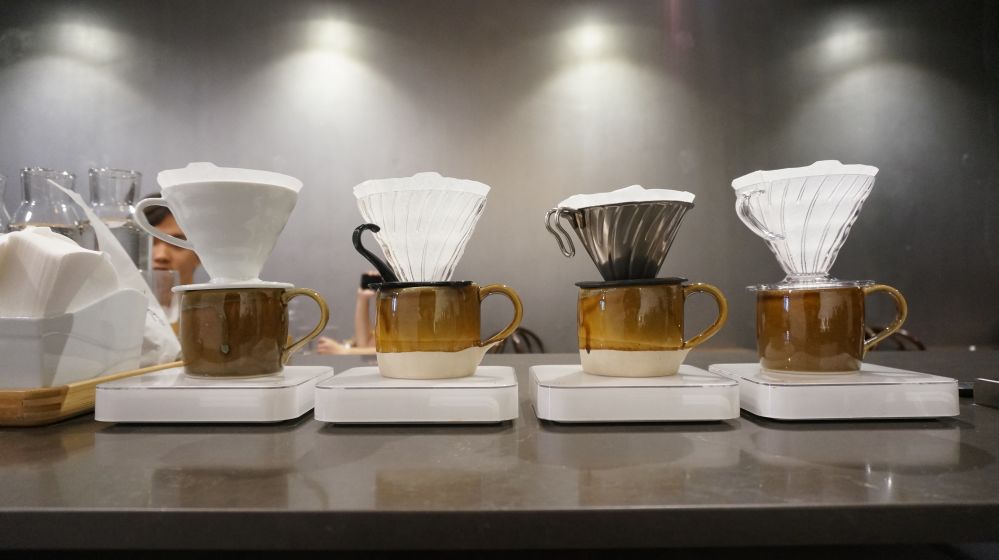
In China, more and more people begin to brew coffee by hand at home, so they no longer have to go to coffee shops to drink. Ordinary coffee lovers can also make high-quality hand-brewed coffee at home.
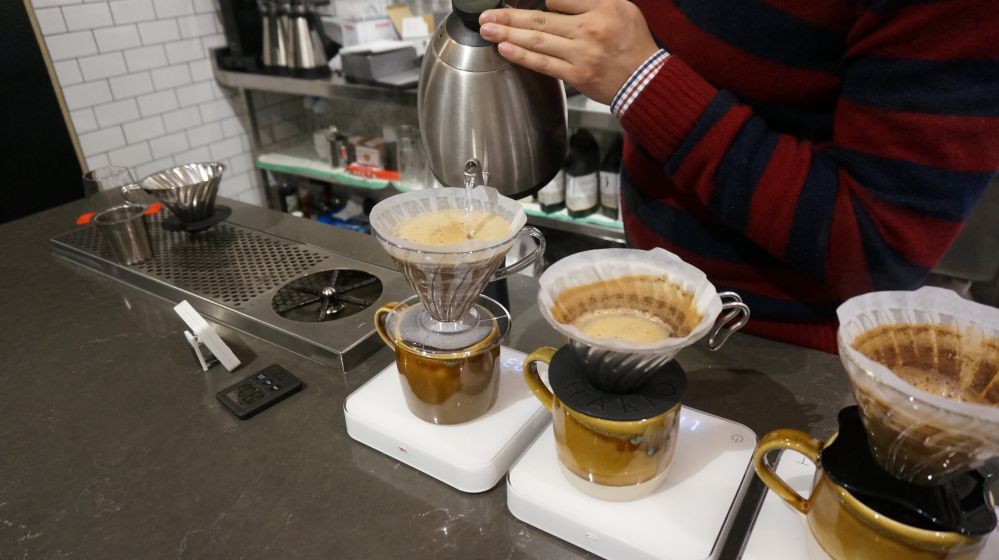
BlackWaterIssue will share the knowledge and skills of hand-made coffee with readers through the series "COFFEE BREWING".
-
The first article is "the difference of filter cup material".
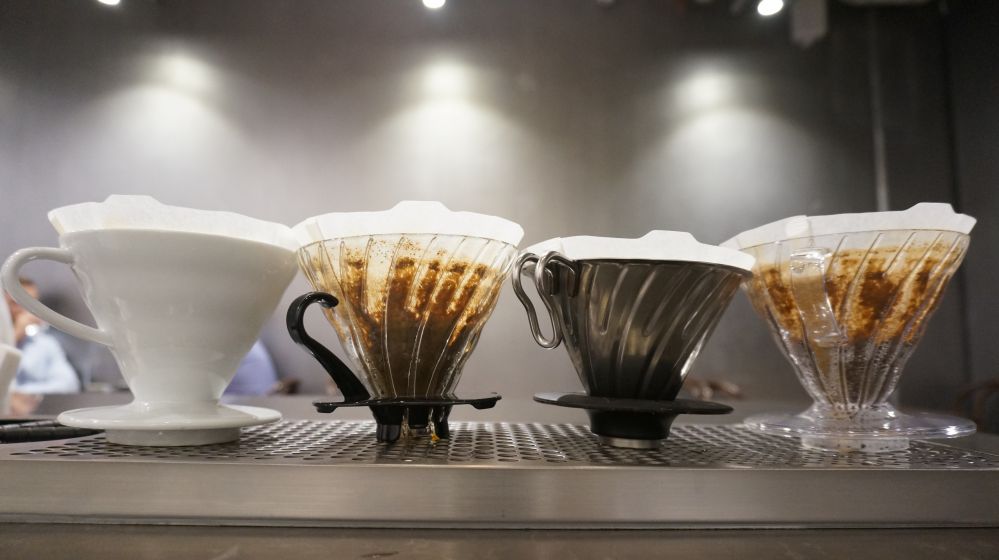
Test condition
Filter cup: Hario V60 (2cup)
Coffee: coffee is made by Aricha in Ethiopia and washed by Gaitania in Colombia
Ratio: coffee 15g + water 260g
Cooking method
15g coffee ▷ 45g/20s/ pre-soak ▷ and pour water until 260g, then stir with a stick (4 times per second)
Each sample was determined by TDS for 3 times.
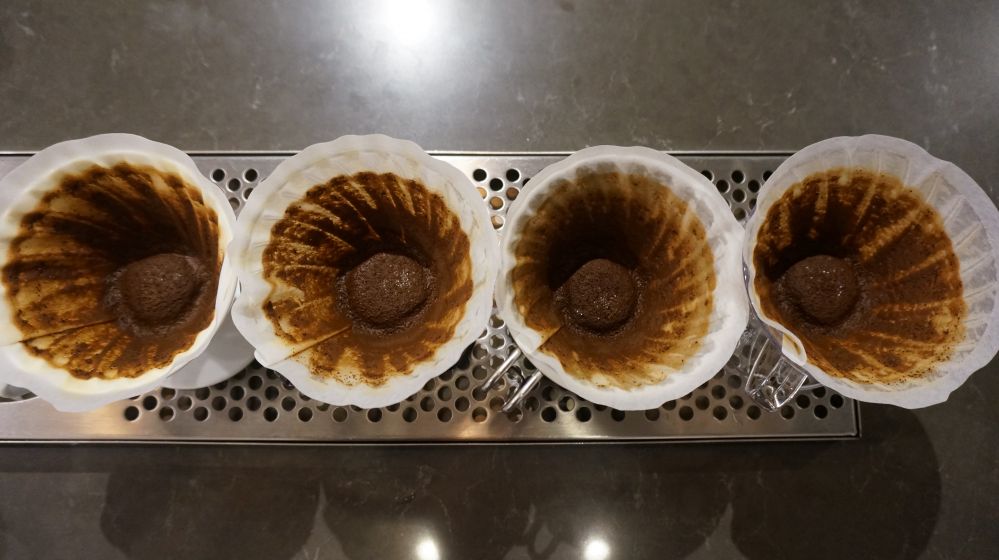
■ Ethiopia Aricha sun
Ceramic filter cup
TDS: 1.27%
Yield: 20.57%
Fragrance: balance, weight, short finish
Glass filter cup
TDS: 1.14%
Yield: 18.44%
Aroma: weaker aroma, more complex aroma, clean, balanced
Metal filter cup
TDS: 1.15%
Yield: 18.60%
Aroma: increased sour taste, complex aroma, lighter weight
Plastic filter cup
TDS: 1.27%
Yield: 20.57%
Aroma: heavy, clean, sharp sour taste
It is worthy of Ethiopia in the sun, showing a good taste, sweetness and fragrance under different materials. However, there are obvious differences between TDS and yield.
The yield of ceramic and plastic filter cup is the highest, which is 57%. Metal is 1.15%, glass is the least 1.14%.
But if you look at the fragrance, glass and metal are more likely to make complex fragrances than ceramics and plastics with high yields.
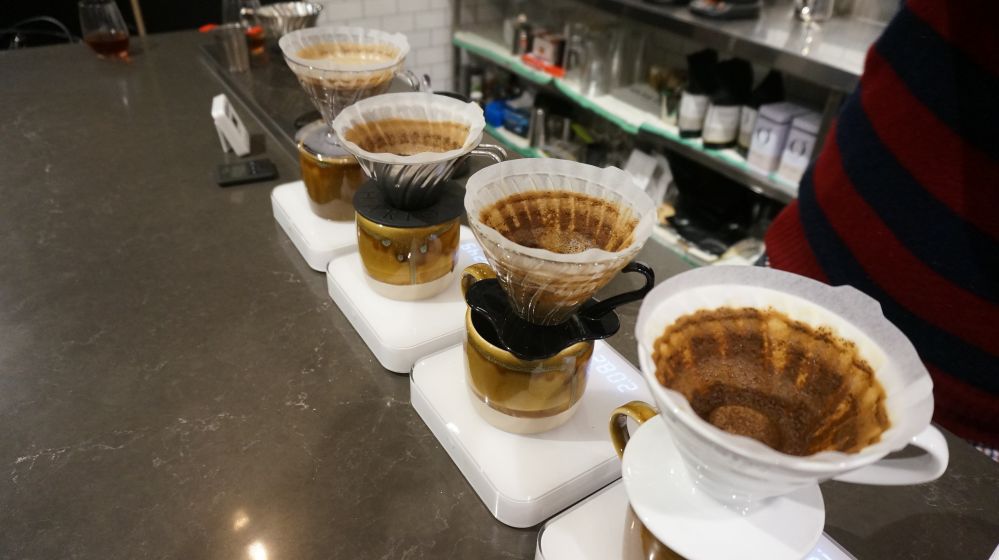
■ Columbia Gaitania washing
Ceramic filter cup
TDS: 1.31%
Yield: 21.22%
Fragrance: weight, short finish
Glass filter cup
TDS: 1.28%
Yield: 20.73%
Aroma: complex aroma, sweetness, cleanliness, lighter weight
Metal filter cup
TDS: 1.27%
Yield: 20.56%
Aroma: sweet, sour, complex aroma, lighter weight
Plastic filter cup
TDS: 1.30%
Yield: 21.06%
Aroma: weight, sharp acidity, dryness
The yield difference between ceramics and plastics is not obvious, but the yield of ceramics and plastics is still high.
Gaitania, with a good balance and clean fragrance, shows different fragrances on different materials.
Conclusion
Of course, with the change of environmental factors such as coffee type, extraction method, bean grinder and water, the taste will show different taste, but the following conclusions can be drawn from two coffee with different personalities.
Ceramic filter cups are suitable for a richer sense of weight.
Glass filter cup is suitable for more complex fragrance, cleanliness and balance.
Metal filter cup is suitable for stronger sour and sweet taste.
Plastic filter cup is suitable for showing richer sense of weight and cleanliness.
The reason for this difference may be that each material has different heat absorption and heat preservation capacity. And the size of the Rib of the filter cup will also affect the results. Therefore, in order to show the desired taste, we also have to consider the material of the filter cup.
Important Notice :
前街咖啡 FrontStreet Coffee has moved to new addredd:
FrontStreet Coffee Address: 315,Donghua East Road,GuangZhou
Tel:020 38364473
- Prev
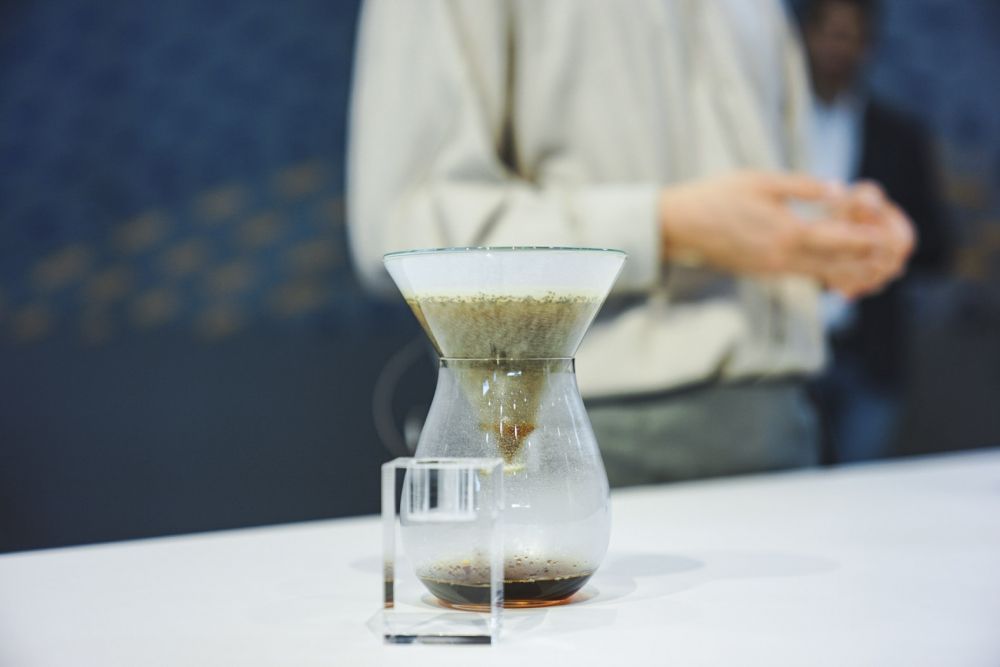
Coffee brewing: according to the difference of pre-soaking water and time
With the development of boutique coffee market, hand-brewed coffee has become the favorite of many baristas. Various baristas use a variety of extraction methods to absorb a variety of coffee charm. And a wide variety of hand coffee tools show the personality and characteristics of different coffee producing areas. In China, more and more people begin to make coffee by hand at home, so hand-made coffee is no longer used.
- Next

Is your coffee too fresh?
Is your coffee too fresh? Is your coffee too fresh? [this article is written by Is your coffee too fresh? Conclusion: in order to get the best taste of fresh coffee beans, you need to balance two important factors: preventing the loss of aroma and increasing carbon dioxide content. For most coffee, this upgrade is available 4-14 days after roasting.
Related
- Beginners will see the "Coffee pull flower" guide!
- What is the difference between ice blog purified milk and ordinary milk coffee?
- Why is the Philippines the largest producer of crops in Liberia?
- For coffee extraction, should the fine powder be retained?
- How does extracted espresso fill pressed powder? How much strength does it take to press the powder?
- How to make jasmine cold extract coffee? Is the jasmine + latte good?
- Will this little toy really make the coffee taste better? How does Lily Drip affect coffee extraction?
- Will the action of slapping the filter cup also affect coffee extraction?
- What's the difference between powder-to-water ratio and powder-to-liquid ratio?
- What is the Ethiopian local species? What does it have to do with Heirloom native species?

